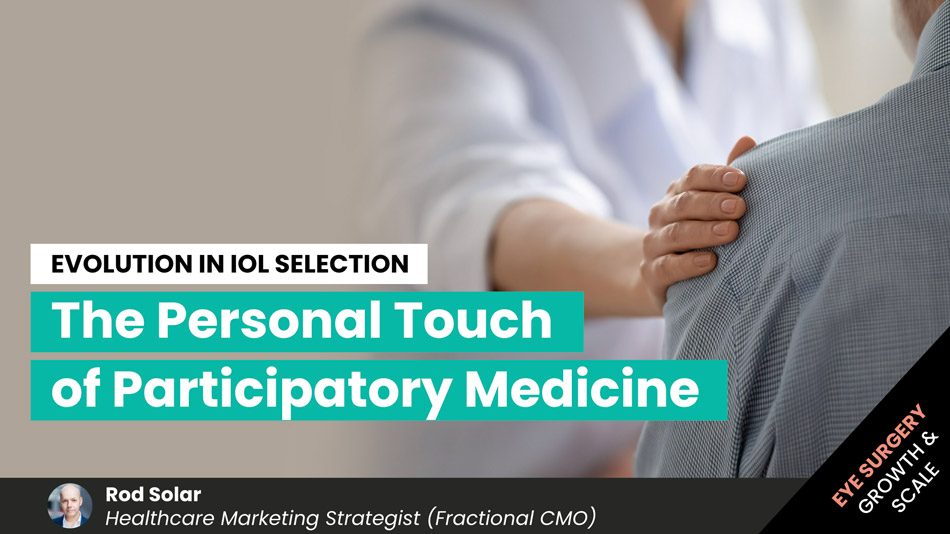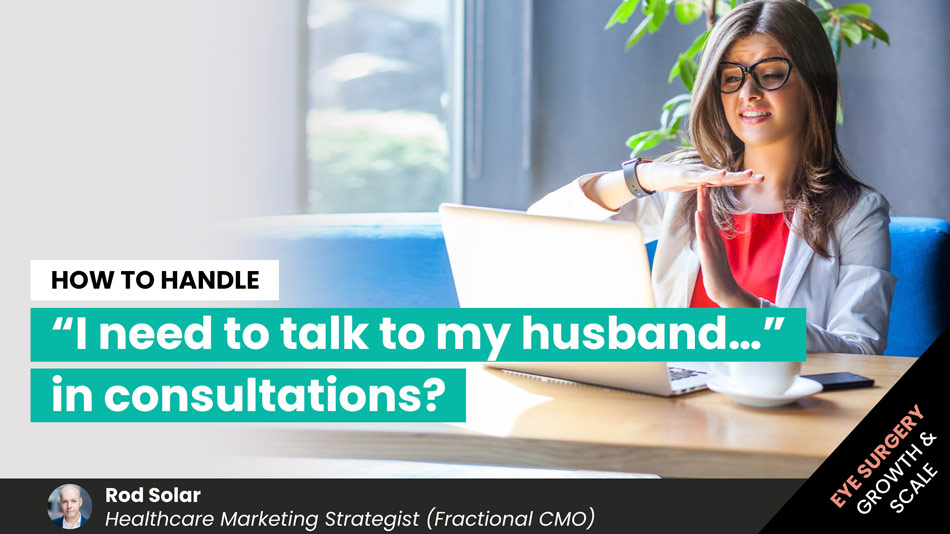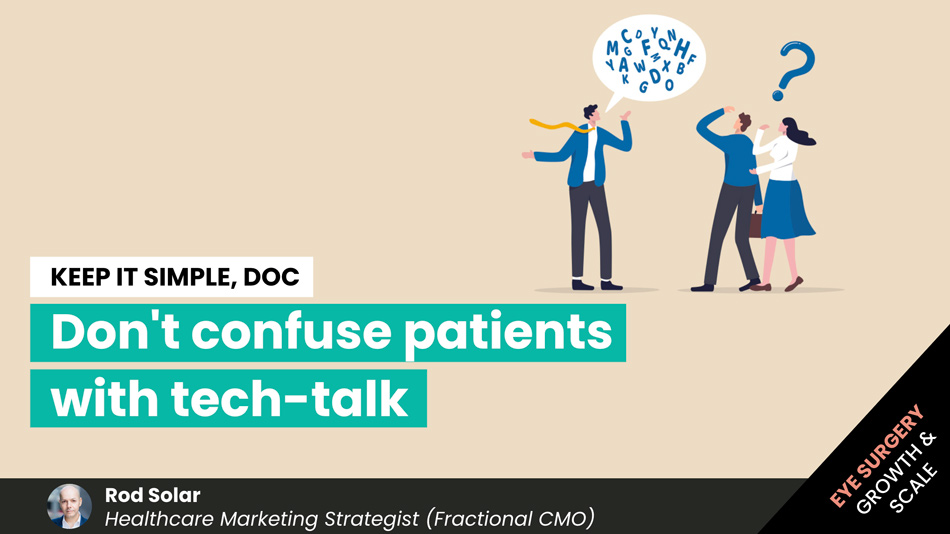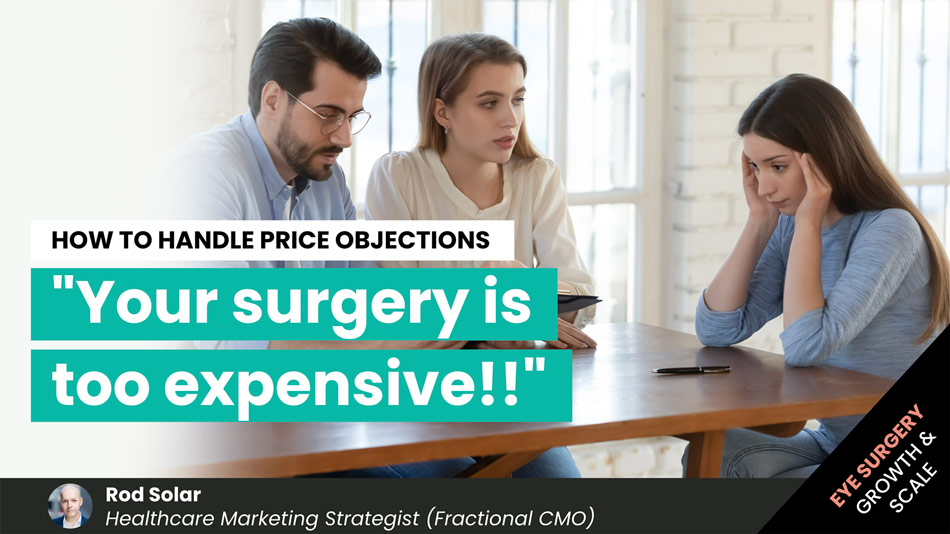
Objection Handling: The five things you need to know
Most people imagine that the most important things they need to handle an objection are
- in depth product knowledge,
- awareness of product features, advantages and benefits,
- competitive awareness,
- and the ability to communicate unique value propositions.
While these are all important things to be aware of, and to communicate clearly and succinctly, the more important things one needs to know to handle objections are the prospect’s wants and needs.
Wants versus Needs
I’m going to qualify wants as emotional (feelings) and needs as rational (thoughts). You may feel you want something but not think it’s rational to purchase it. On the other hand, you may think something is a rational purchase decision, but you don’t feel you want it enough to purchase it. There is a subtle difference, and both are important when making a purchase decision.
I have said for many years: people buy with emotion, and justify with logic. A prospect needs to both feel they want something, and think it’s sensible to purchase, before they will commit to buying it.
When you’re handling an objection, you’ll have much more likelihood of being able to understand and overcome it if you are aware of the prospect’s wants and needs.
First, the emotional wants
Wants are emotional feelings one has about the problems we have experienced in the past, and our feelings about what we hope to experience in the future. You might call this the “pain” and the “gain”. I’ve explained these two concepts, called the Past Motivating Incident and the Future Motivating Event, in previous posts. I haven’t however, linked these concepts with Objection Handling.
The prospect’s Past Motivating Incident and the Future Motivating Event are the context and desired future behind the prospect’s Dominant Buying Motive(s). This juxtaposition of pain and gain are rooted in memories and aspirations in the prospects’ hearts and minds. It’s a salesperson’s job to get into the hearts and minds of their prospects to understand these two concepts, so they can begin to understand what the prospects Dominant Buying Motives might be.
With the Dominant Buying Motive known, the salesperson is then able to re-focus the prospect on the emotional desire that motivated the prospect to want to make the purchase decision in the first place. This goes beyond the problems the prospect wants to overcome. It goes beyond understanding the solutions the prospects want. This is about understanding how the prospect feels about their pain, how they feel about the expectation for gain, and how these problems and solutions affect the prospect’s daily emotional life.
Emotionally based objections, like
- “It’s too expensive”
- “I’m too scared”
- “I’m too busy”
- “I need to talk to (a third-party)”
are all best handled by appealing to the prospect’s emotional wants. All the prospect needs to do is feel that their emotional desires are more important to them than the obstacles that are holding them back. Being reminded of these desires is the first step in gaining that perspective.
Second, the rational thoughts
We are not purely directed by our emotions. Instead we have logic governors that aim to control and manage our impulses. Therefore, to make a buying decision that sticks, and can be defended when buyer’s remorse sets in, emotionally-based buying decisions need to be supported by a scaffolding of logic.
A logical and rational decision is a thoughtful choice that the prospect can support and defend because it fits the prospect’s priorities and criteria. Priorities are what must be present in an option for it to be selected. Criteria is what is nice to have in an option that is selected.
For example, a prospect may think to themselves, I will buy a car only if it
- is four-door
- is European made
- is priced under £20,000
That is the prospect’s priority set. They are the things that must be present to select a particular option to purchase.
Further, the prospect may think to themselves, beyond the above I would prefer to buy a car if it
- meets my personal standard for fuel efficiency
- is grey
- comes with a good stereo system pre-installed
The above list are preferences. If a car doesn’t have these things, the prospect may still buy the car. However, they will need to see other advantages that can put these nice to haves into context.
Examples of rational objections include
- “I can find more quality elsewhere”
- “I can find more expertise elsewhere”
- “I can find more convenience elsewhere”
- “I can find a less expensive price elsewhere”
- “I can find more value elsewhere”
- “I can find a better product elsewhere”
Nothing is perfect. A good salesperson realises that the solution needn’t be perfect. It just has to be better than the best alternative option, and what the prospect is coping with now.
Having information about the prospect’s priorities and criteria on hand will enable the sales person to again put the prospect’s objections into perspective. Is this option worse than continuing to shop? Is this option at least better than the best alternative available? Is this option better than doing nothing?
Without this information, you have very little idea as to what is important to the prospect – what their priorities and criteria are, and how to handle the objections that you get.
To review, the 5 things you need most to handle an objection are:
- The prospect’s Past Motivating Incident
- The prospect’s Future Motivating Event
- The prospect’s Dominant Buying Motive
- The prospect’s Priorities
- The prospect’s Criteria
You might be wondering: how do you get this information? Is there a database somewhere we can refer to? Will the prospect just volunteer this information? Both are unlikely.
You need to ask them to give you this information. I’ll explore some of the questions I’ve found useful when aiming to discover these 5 things, in my next post.
NOTE: The best way to answer that nagging question about practice growth or marketing or patient volume in the back of your mind is to book a free 15-minute compatibility call. Get some options and go away with a clear idea of what’s possible.
About the author
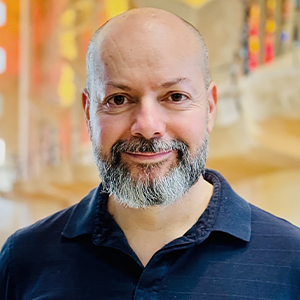
Rod Solar
Founder & Scalable Business Advisor / fCMO
Rod Solar is a co-founder of LiveseySolar and a Scalable Business Advisor for its customers. Rod mentors and coaches eye surgery business CEOs/Founders and their leadership teams to triple their sales, double their profit, and achieve their “ideal exit”.
Related Posts
Meet our Co-Founders
We’re passionate about helping leaders of high-quality, growth-minded practice owners double their practice revenue

Rod Solar
Founder & Scalable Business Advisor
For over 20 years, I’ve helped ophthalmology entrepreneurs scale their private practices. I specialise in doubling revenue within three years by offering a proven framework, hands-on experience, and a team of experts who implement what works. We take the guesswork out of growth and scale, so you can focus on delivering exceptional patient care while maximising the value of your business.
LiveseySolar completely transformed the way we were approaching this… We’ve gone from having just the dream of having a practice to having a practice up and running with people making inquiries and booking for procedures… It’s extremely pleasing. We feel lucky we connected with LiveseySolar.
— Dr Matthew Russell, MBChB, FRANZCO, specialist ophthalmic surgeon and founder of VSON and OKKO

Laura Livesey
Founder & CEO
I’m the co-founder & CEO of LiveseySolar. I’ve developed powerful eye surgery marketing systems that increase patient volumes and profits for doctors, clinics, and hospitals, since 1997.
Rod and Laura know as much about marketing surgery to patients as I know about performing it. They are an expert in the field of laser eye surgery marketing. They know this industry inside out. I believe that they could help many companies in a variety of areas including marketing materials, sales training and marketing support for doctors.
— Prof. Dan Reinstein, MD MA FRSC DABO, founder of the London Vision Clinic, UK






